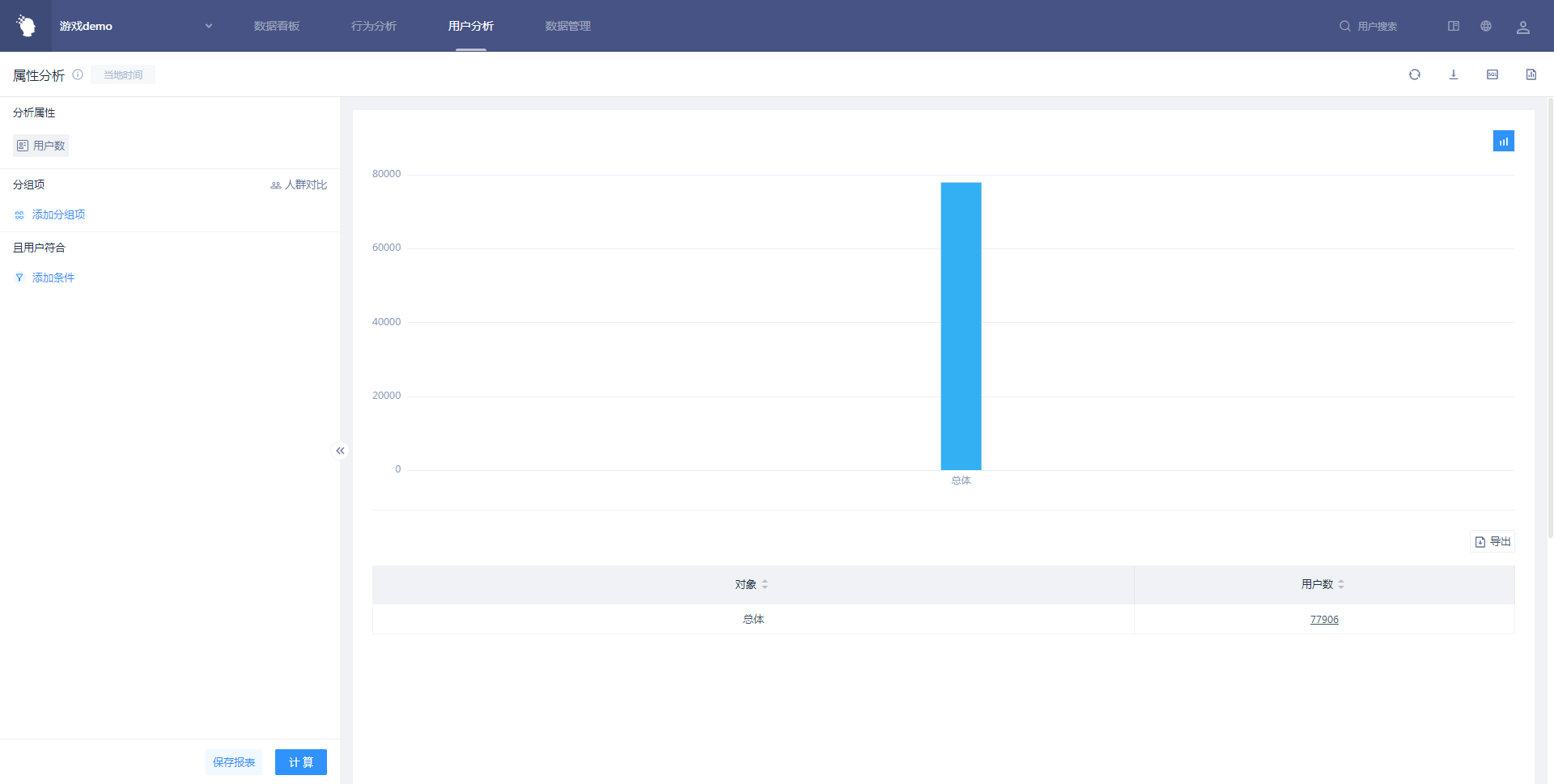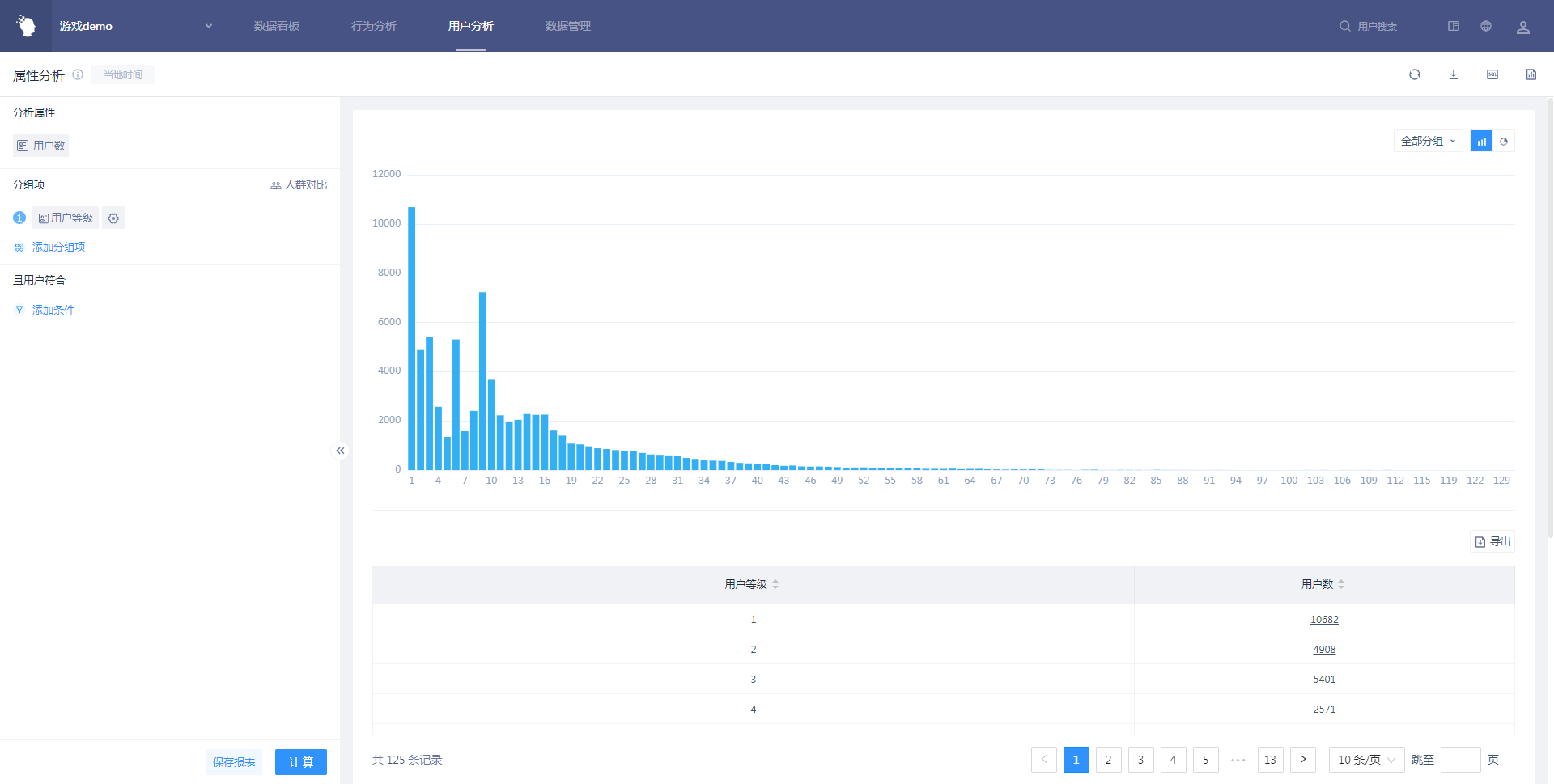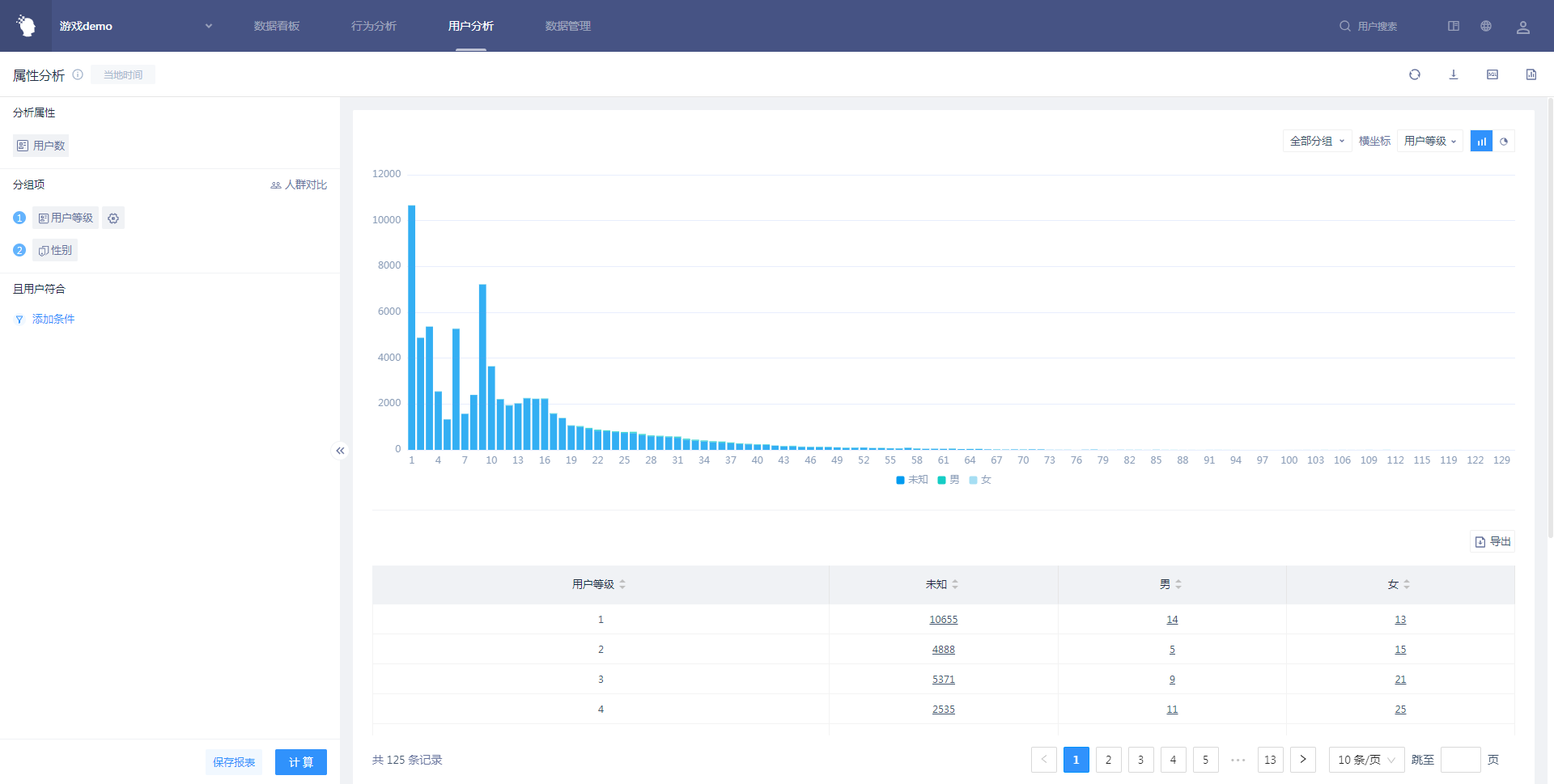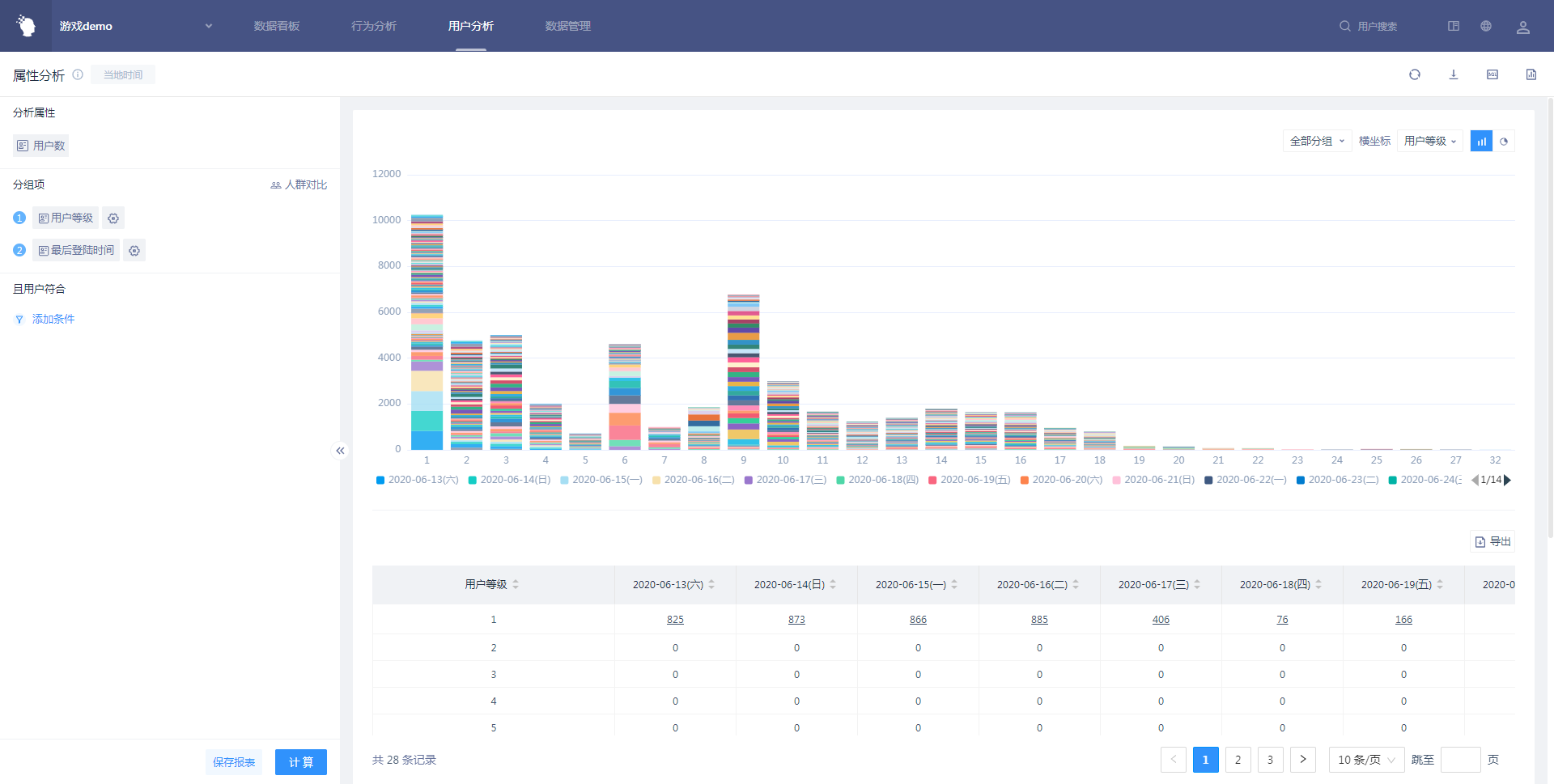# User Property Analysis
# I. The Significance of Attribute Analysis
Attribute analysis is a model that specifically analyzes the statistics and distribution of user features. The model is classified according to user features, and the statistics and distribution of users with different group values can be viewed at the same time. For example, check the distribution of users in various provinces and the age distribution of users. It can quickly depict the user profile of the overall user group. Obtain the characteristics of the designated user groups from multiple perspectives and all-round aspects. This can get the composition and preferences of the whole user from a macro perspective, thus providing basis for fine operation.
# II. Location and Applicable Role of AttributeAnalysis
It can be accessed from the "Property Analysis" page under the "User Analysis" module
| Company Supervisor | Administrator | Analyst | Ordinary members | |
|---|---|---|---|---|
| Attribute analysis model | ● | ● | ▲ | △ |
Permission description:
● Role must have
▲ The role has the permission by default, but can revoke
△ The role is not available by default, but can be authorized
○ Role must not have
# III. Overview of Attribute Analysis Page
It consists of four parts: 'Analysis Direction Setting Area', 'Display Filter Area', 'Display Chart Area' and 'Table Details Area':

# IV. Usage of Attribute Analysis
# 4.1 Several Commonly Used Analysis Scenarios





# 4.2 Conditions for Analyzing Attributes
The content that can be analyzed is the number of users, user features or a certain analysis direction of user tags.

Analyzable directions vary depending on the data type.
| Analysis object | Data type | Analysis direction |
|---|---|---|
| Number of users | ||
| User features/tags | Value | Sum, mean, average, median, maximum, minimum, deduplicate |
| User features/tags | Boolean | True number, false number, empty number, not empty number, deduplicate number |
| User features/tags | Text | Deduplicate number |
| User features/tags | Time | Deduplicate number |
| User features/tags | List | List deduplicate number, collection deduplicate number, element deduplicate number |
| User features/tags | Object | Deduplicate number, empty number, not empty number |
| User features/tags | Object group | Deduplicate number, empty number, not empty number |
Note: When selecting the analysis attribute as the number of users, you can click in the table area to enter the user list or save it as a result group.
# 4.3 Setting of Group Items
Contains 4 state types:
- Default is not grouped, at this time do not distinguish the crowd directly analyze the situation of all users.
- Switch to group comparison, when different user groups can be compared, up to 10 groups can be added.
- Select an item for analysis, you can choose 'user feature' , 'user group' or 'user tag'.
- Select 2 items for analysis, you can select 'user feature', 'user group' or 'user tag', then the chart abscissa can be switched.
# 4.4 The Logical Condition of the Filter Condition
The data layer can choose user features, user tags, or user groups, with different attribute logic according to the data type:
| Filter item data types | Example | Support attribute logic |
|---|---|---|
| Value | Consumption amount | Equal to, not equal to, less than, less than or equal to, greater than, greater than or equal to, with value, without value, interval |
| Text | Province | Equal to, not equal to, include, not include, have value, have no value, regular match |
| List | ID list | Existing element, non-existing element, element location, value, no value |
| Time | Registration time, last active date (yyyy-MM-dd HH: mm: ss. SSS or yyyy-MM-dd HH: mm: ss) | In interval, less than or equal to, greater than or equal to, relative to current date, with value, without value |
| Boolean | Wifi use | True, false, valuable, worthless |
| Object | Player resource snapshot | Value, no value |
| Object group | Expedition lineup | Existing object satisfies, no object satisfies, all objects satisfy, has value, has no value |
User grouping can choose "belong to grouping" or "do not belong to grouping"
# 4.5 Condition for Group Comparison
When compared, groups of people using their own filter conditions were compared.

# V. Best Applications
# 5.1 Current Status of Users
Attribute analysis mainly analyzes user features, groups and tags, which record the current state. Therefore, if you want to obtain the current state of the user, you can use attribute analysis to calculate.
# 5.2 The Union and Intersection of Multiple User Groups
Attribute analysis can be used to calculate the union or intersection of multiple user groups. Multiple groups are selected through filtering conditions. If the filtered juxtaposition is 'and', it is the intersection of user groups. If it is 'or', it is the union of user groups. The union or intersection is achieved by creating groups based on the results of the calculation.
